Florentines take hot chocolate to another level.
If, like me, you grew up thinking that hot chocolate was Hershey’s Instant or Swiss Miss Instant, (unhealthy processed products containing alkalized cocoa), a delicious revelation awaits you in Florence.
Originally chocolate was a beverage only. Hot, but not sweet, it came from the Americas.
Italians traveling to the new world played a role in introducing this exotic drink to European society—(upper-class society since it was expensive).
Columbus, who we all know was Italian but sailing for Spain, brought (or sent) cocoa beans to Spain from the new world but the Spanish didn’t know how to process them. Then the Spanish Jesuit missionaries observed and wrote about the use of chocolate and began to use it as a medicine. When sugar was added, it became popular in the court back in Spain.
In 1560, King Emanuele Filiberto of Savoy tried out the hot chocolate drink when visting the King of Spain. Then, when the Duchy of Savoy’s capital was moved from Chambéry to Turin, Emanuele Filiberto offered everyone in the city a cup of hot chocolate to celebrate. Ever since, Turin has been a leading city for chocolate in Europe. (Savoy, at that time, was a duchy incorporating most of what’s now the region of Piemonte.)
The next Italian to be involved in chocolate was a botanist from Milan, Girolamo Benzoni. He went to the new world in 1541 and after his extensive trip, in 1565, he described in his book Historia del Nuovo Mondo, the preparation of chocolate he viewed while in the Mesoamerican region (today’s Mexico).
In the 1590s, Francesco Carletti, a Florentine, traveled to the new world and wrote a detailed description of the cacao growing and chocolate making process. As the story goes, he passed the information to Ferdinando I de’ Medici when he returned to Florence in 1606.
Carletti wrote,
Its main consumption is in a certain drink the Indians call Cioccolatte. This drink is made by mixing the Cocoa fruits, which are as big as acorns, with hot water and sugar.
Carletti explained that chocolate was, “commonly drunk by all the natives of the country and by the Spaniards” and “everyone becomes addicted.”
Chocolate mania took off in Florence in the 1660s when Duke Cosimo III de’ Medici had a personal chocolate industry going. After receiving a gift of jasmine from India, from the King of Portugal, Duke Cosimo III commissioned Francesco Redi, (head physician, chief botanist and alchemist to the ducal court) to create a proprietary chocolate recipe.
I don’t know if it was Francesco Redi’s or Duke Cosimo’s idea to combine the two exotic items, but between the two of them, a jasmine chocolate drink was born. It became a status symbol and Duke Cosimo kept the recipe a guarded state secret. The complex, challenging, and artistic process of making the jasmine chocolate (with thousands of jasmine flowers) set the standard for the innovation and quality of Tuscan artisanal chocolatiers.
When I first experienced Florentine hot chocolate in the 1980s, I had a minor existential crisis. The difference between it and the “hot cocoa” that came from a tin of Hershey’s Instant “real chocolate flavor” powder was 🤯 mind-scrambling.
Pasticceria Giorgio
Via Duccio di Buoninsegna
This pasticceria has had a cult following of locals since in opened in 1972. It remains frequented predominantly by Florentines due to its location in Scandicci—an area of outskirts south west of the center. Their cioccolata calda is gorgeous and stands a bit above all the others I’ve tried. Luckily, Pasticceria Giorgio is only a twenty-minute walk from where I live. When I was here recently getting hot chocolate, the gal I ordered from strongly suggested I try it with whipped cream. I’m more a purist and I didn’t want the calories but if you’re a fan of whipped cream, it goes wonderfully with Florentine hot chocolate.
Click to play the video and see the lusciousness 😍
Caffè Gilli
Piazza della Repubblica
With it’s gorgeous Belle époque interior, this is my favorite caffe in the center— and by center I mean smack dab. It’s been in Piazza della Repubblica since 1920 and before that it was in Via Calzaiuoli— the street running between the cathedral and town hall. Since the 1800s it has been producing quality chocolate and pastries. Although it’s a slight notch under Giorgio’s, you can’t go wrong getting hot chocolate here. And they always have such attractive and enticing window displays🤩.
Riviore
Piazza della Signoria
Like Gilli, at Riviore you can also soak up the atmosphere of an elegant 19th century caffe.
When Italy was united as a country in 1861, its capital shifted from Turin to Florence in 1865. Enrico Riviore, Master Chocolatier of the House of Savoy in Turin, moved to the new capital of Florence along with the Savoy court and opened Caffe Riviore in 1872, overlooking the stunning Piazza della Signoria. The hot chocolate here has always been considered top-notch by locals.
Here’s an image from Rivoire’s social media of it with whipped cream (con panna).
Slitti Experience
Piazza dell'Olio
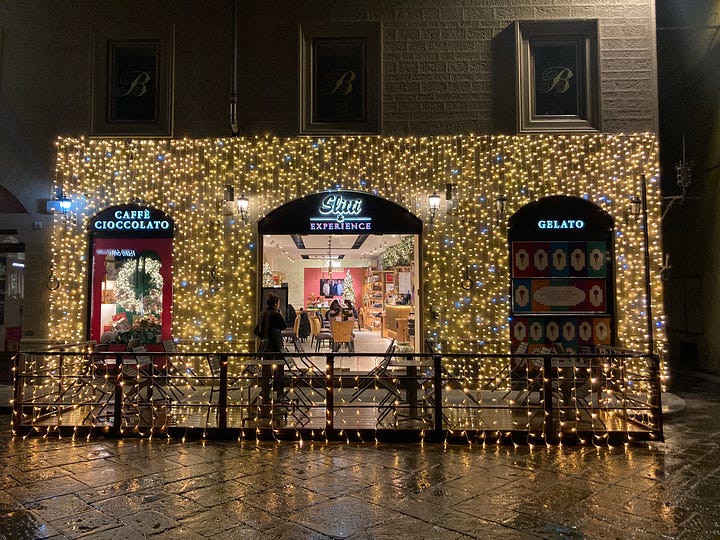
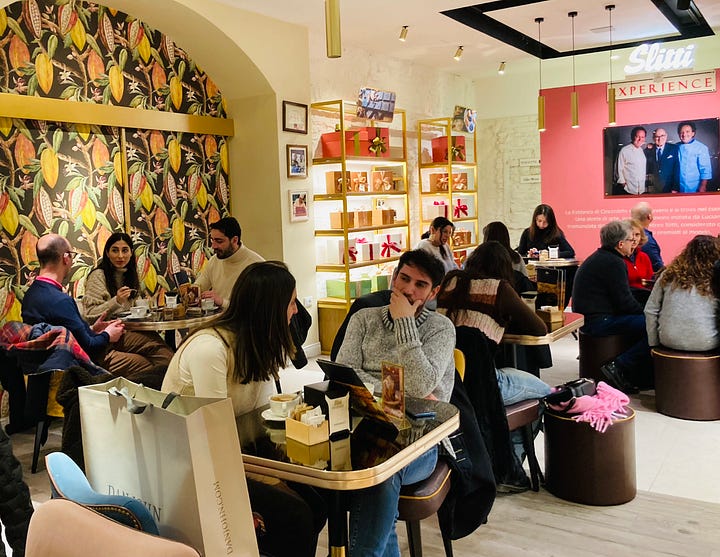
While the Slitti flagship in Florence doesn’t have the historic look of Riviore and Gilli, the company is rooted in the Tuscan artisanal chocolatier tradition. It started in 1969 when Luciano Slitti opened a coffee roastery in Montecatini Terme. In the late 1980s his sons took over the business and moved into the world of chocolate. They became well known for excellence in chocolate and as the company grew, they remained “focused on artisanal details crucial to the quality of the product.”
At Slitti, there isn't the stand at the bar and pay less option. You take a seat and order. They offer traditional hot chocolate, speciality coffees, and a mix of both, such as the moretto, which is a drink of hot chocolate, espresso, and mousse di latte which is whipped cream, mascarpone, and white chocolate.
Service here can be hit and miss.
Vestri
Borgo degli Albizzi
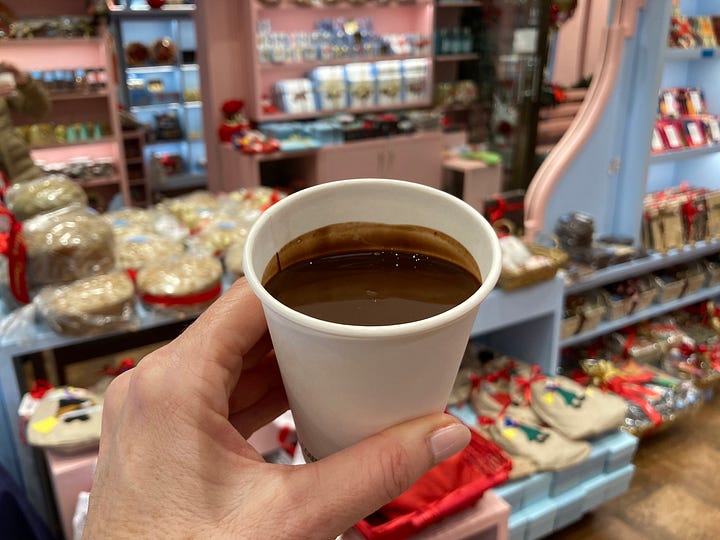
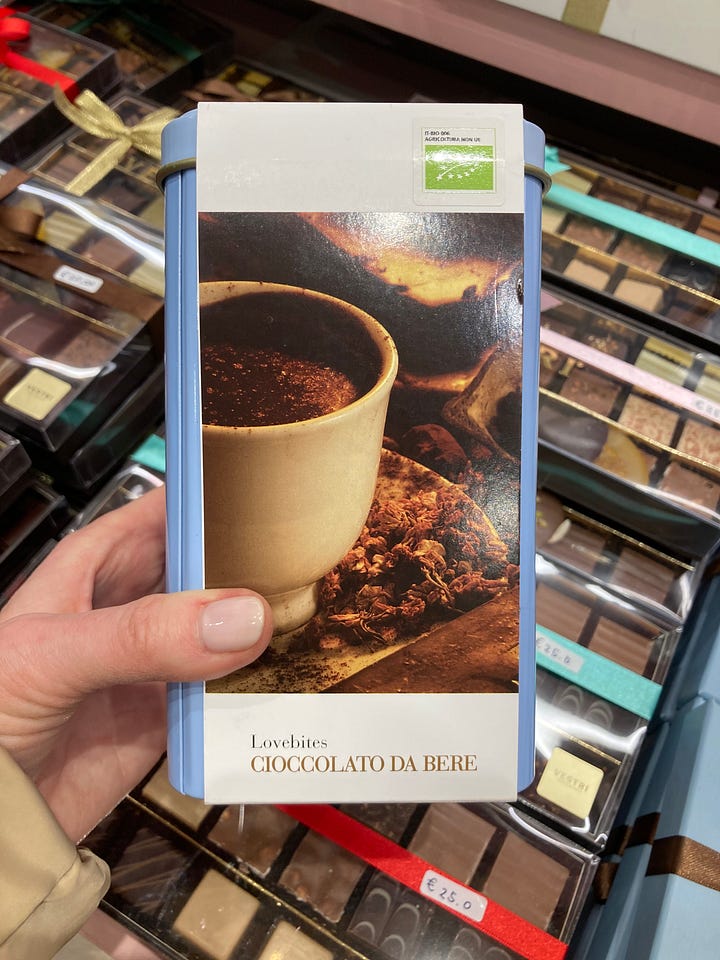
This charming little artisan chocolate shop is east of the center, just before the area called Sant’Ambrogio. When I lived in Florence in 2003/2004, it was down the road from my apartment, so I’ve been enjoying their hot chocolate and gelato and buying their boxes of chocolates as gifts, for a long time.
Danielo Vestri, the owner, bought a plantation in the Dominican Republic (with ideal conditions for growing cacao) to follow the entire production process, “from the cocoa bean to the bar”.
No pesticides or chemicals are used on the plantation, as they care about having a completely natural chocolate that reflects the characteristics of the terroir of origin.
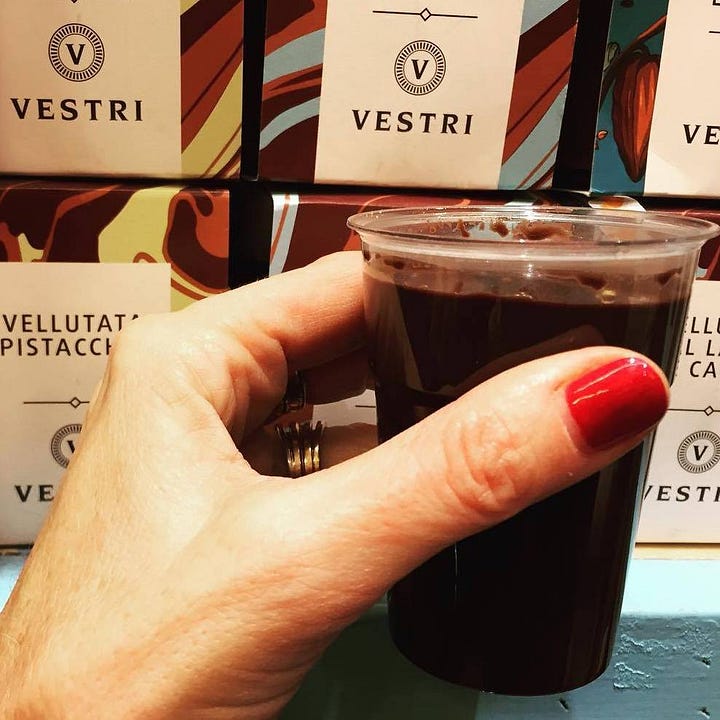

Sbrino Gelatificio Contadino
Via dei Serragli

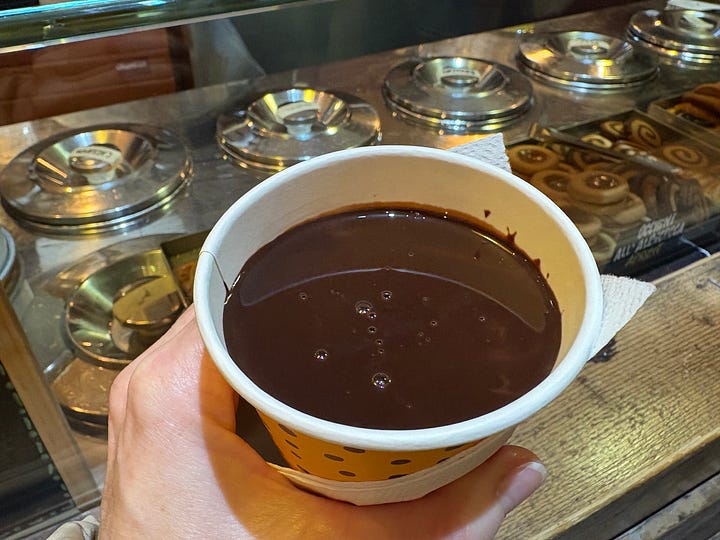
On the other side of the river, this artisan gelateria has a hipster/farmhouse/young vibe that is typical of the Oltrarno, and totally different from the elegance of Rivoire and Gilli. Here you can get quality hot chocolate in a paper cup. Optional to add a scoop of gelato, or a liquor.
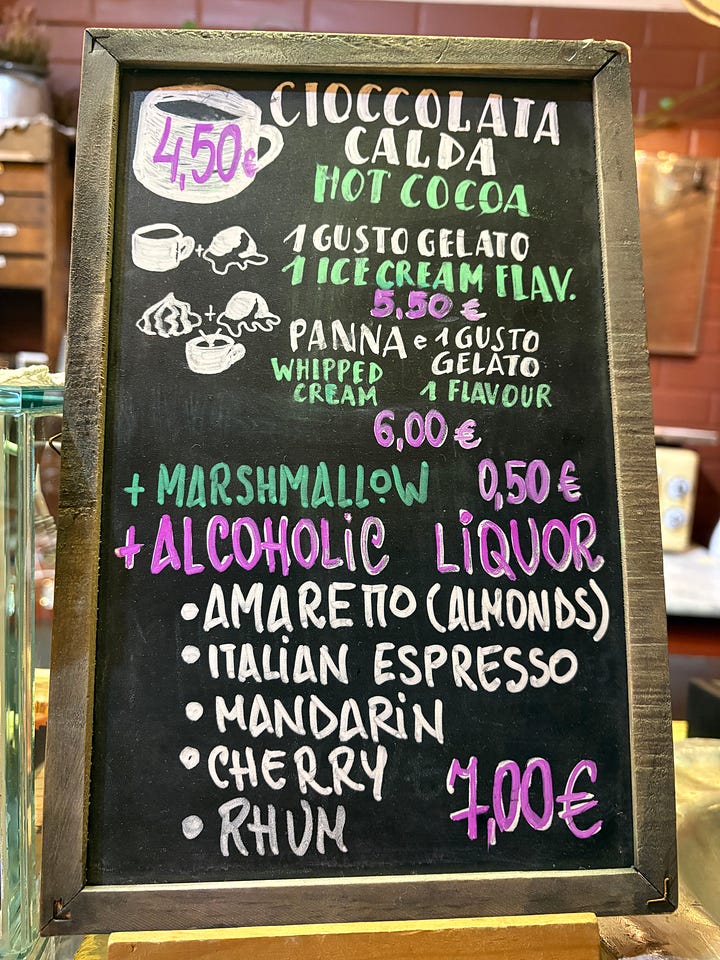
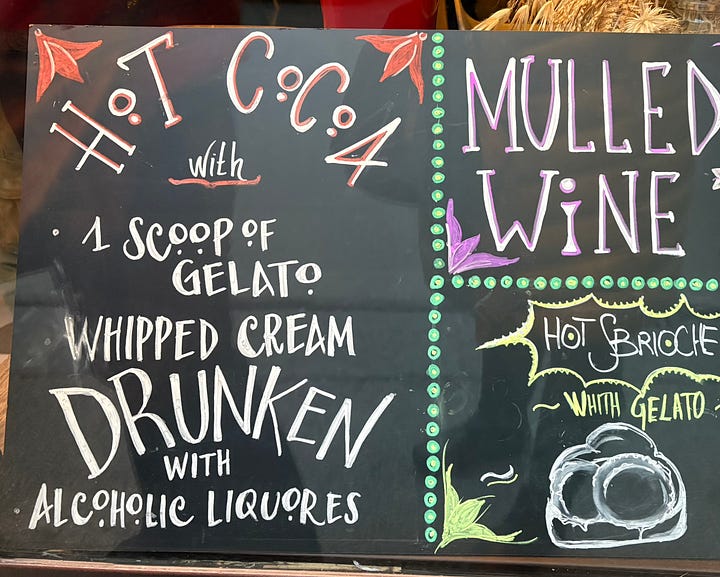
Other mentions
Gelateria Pasticceria Badiani
Via dei Tosinghi
For a different take, try Badiani’s pistacchio hot chocolate.
Ballerini
Via Ognissanti
A cioccolateria/pasticceria well-regarded by locals. I have not yet tried their hot chocolate.
Venchi
Santa Maria Novella train station, in Via Calzaiuoli, in Via Calimaruzza, and across the river in Piazza Frescobaldi.
Yes, it’s become an international chain, but Venchi’s origins are in artisan chocolate tradition of Turin. Venchi uses 100% Piedmont Hazelnuts, sourced and processed in the Langhe region, single-origin cocoa, and no preservatives or palm oils. Their packaging is made from renewable, recyclable, plastic-free materials.
While some locals look down on it because it’s an international chain, I have also met locals who love Venchi’s hot chocolate.
This should be enough to keep you in chocolate bliss for a while. As Francesco Carletti said back in 1606, “everyone becomes addicted.” And why not? Dark chocolate is healthy—maybe particularly when in beverage form?
Have you experienced Florentine hot chocolate? Let me know in the comments.





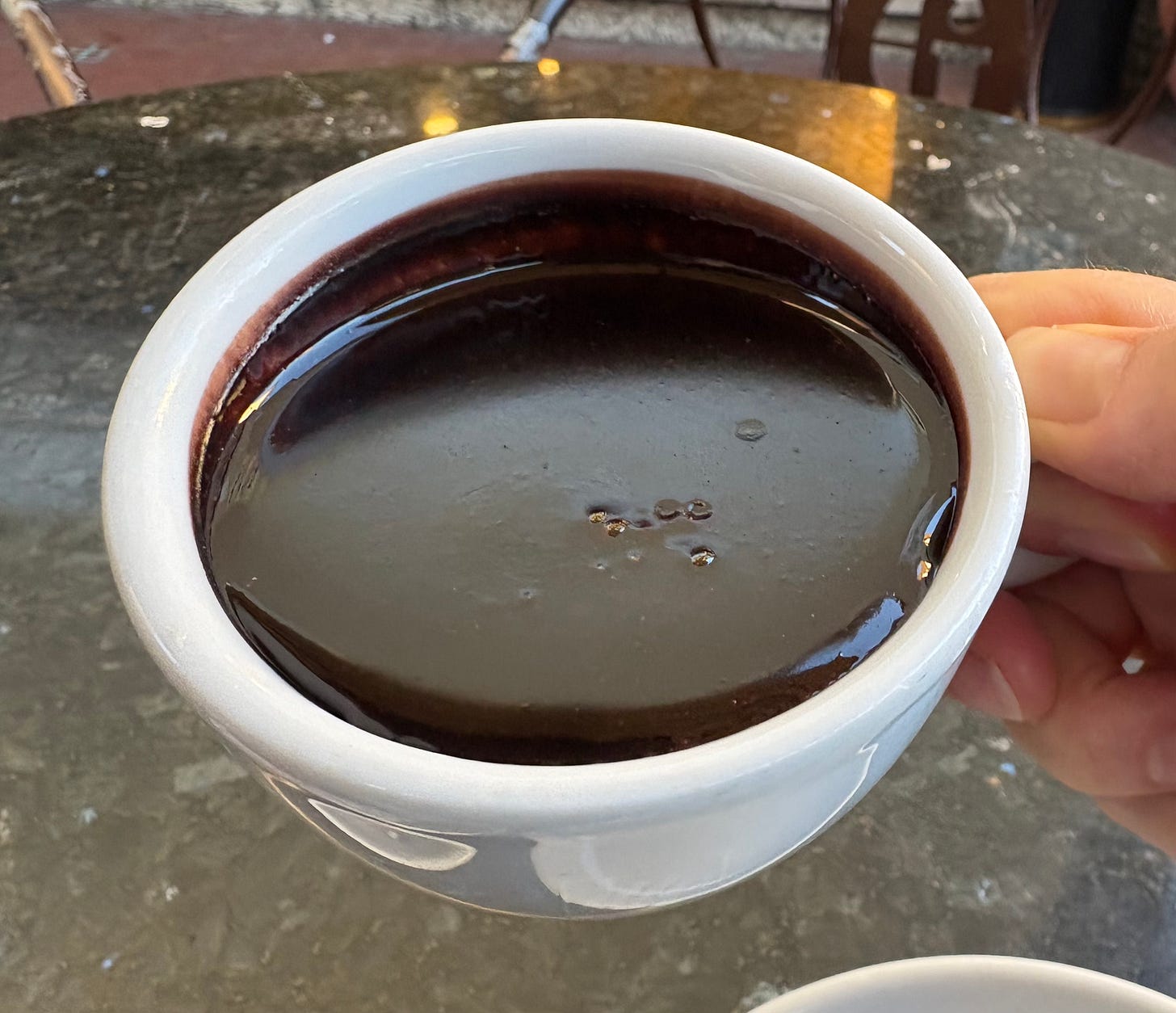
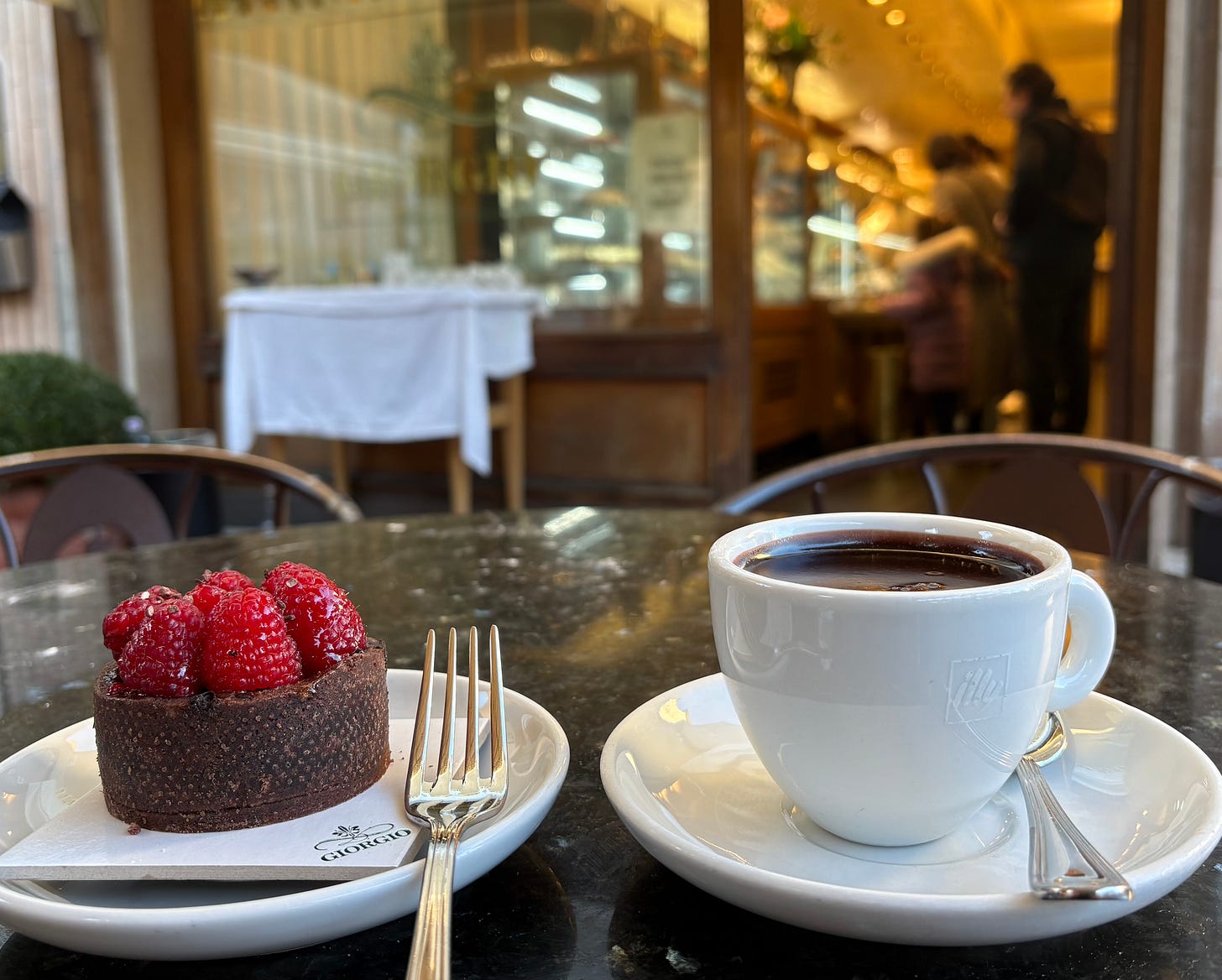
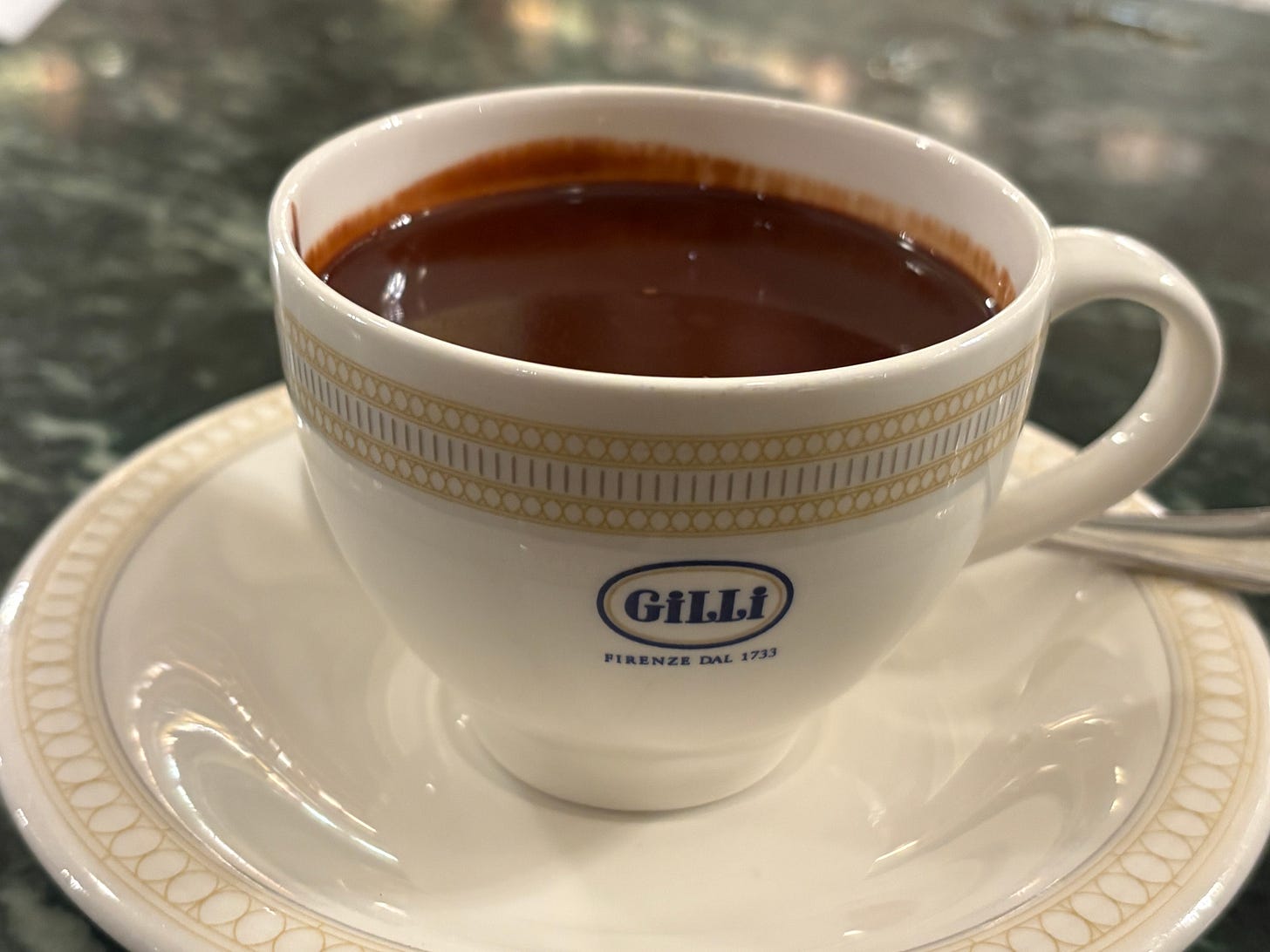
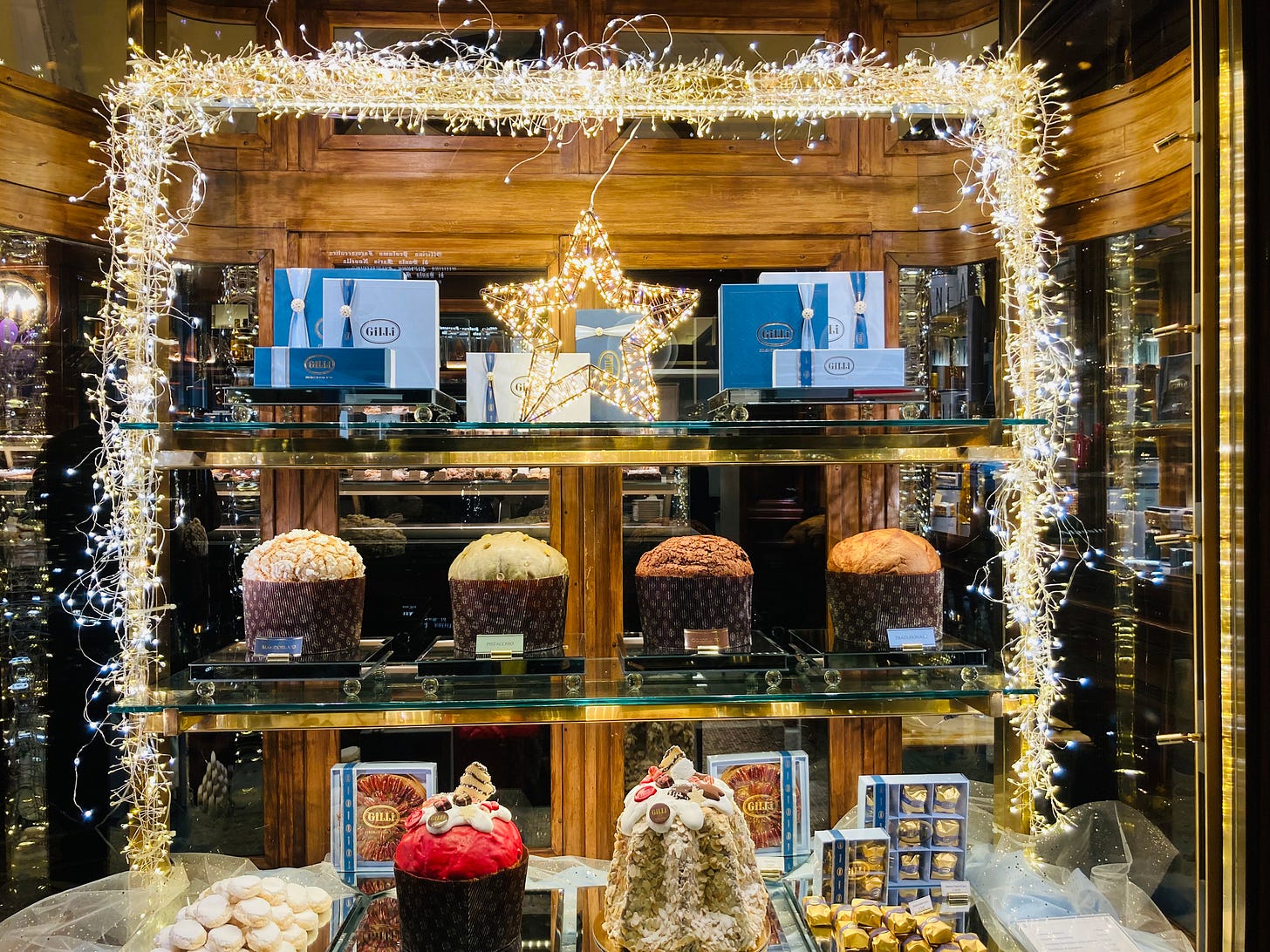
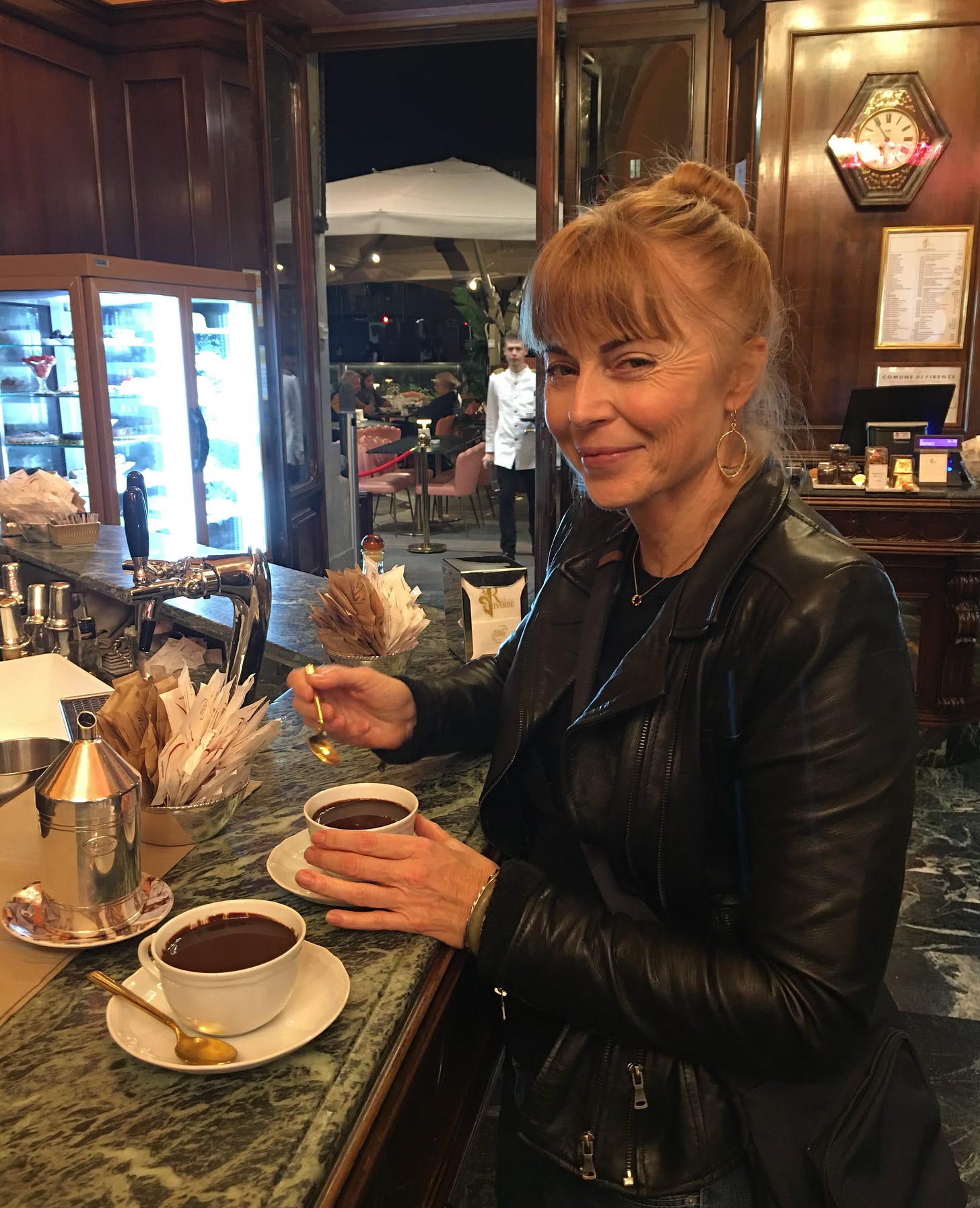
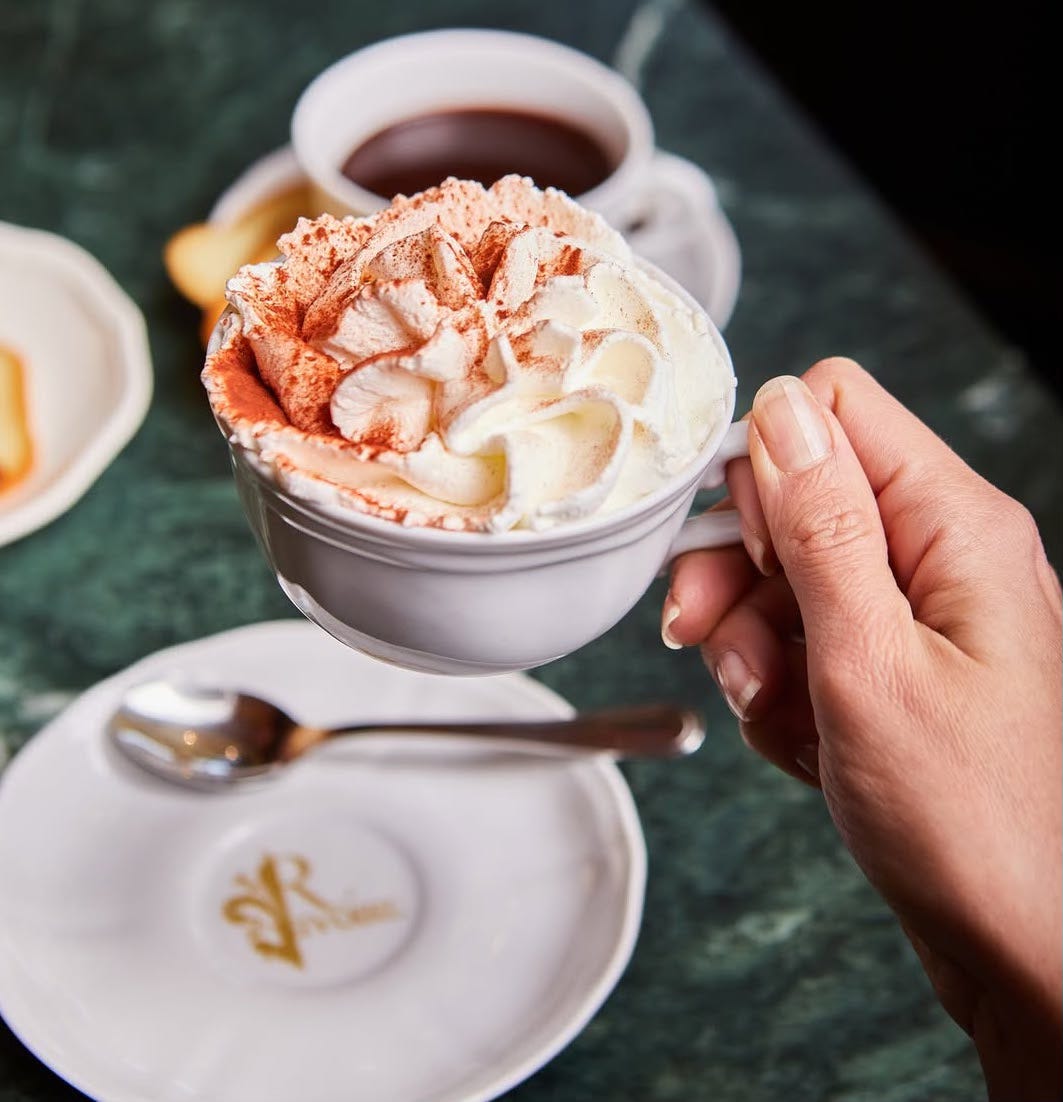
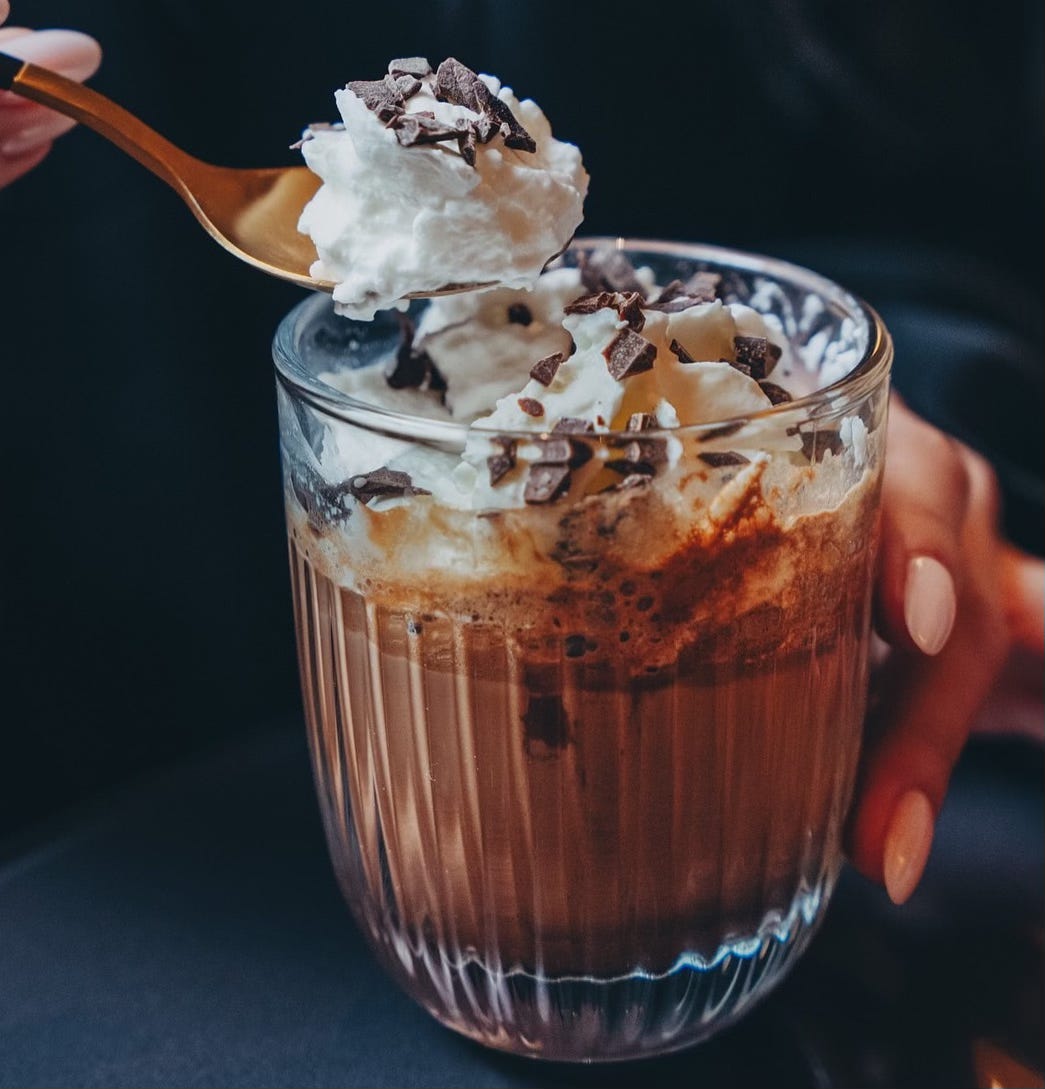
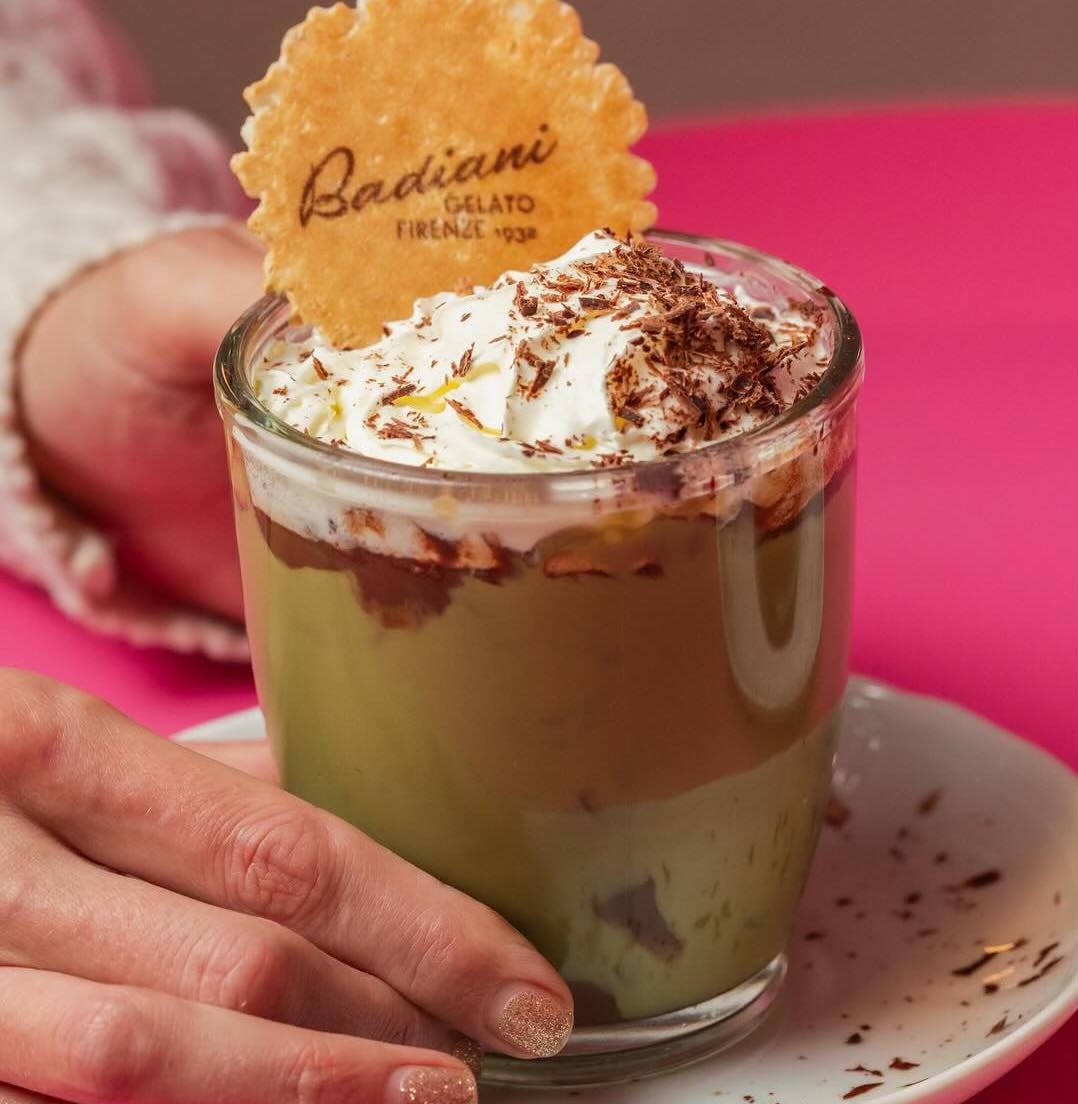
I became a chocolate drink convert the first time I had a real chocolate drink in Lombardia in 1999, which was my first time in Italy. I was hooked! Even back in NYC in 2000 I couldn’t find it imported. Found it later in 2004 when I moved to Astoria with its huge Italian population. Nowadays the closest I get to it is Babbo chocolate drink.
The chocolate looks amazing and very unique style! Would love to try it sometime!